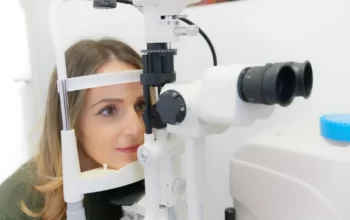
People may think of color blindness as an oddity that has little effect on the general population. Surprisingly, the condition affects 8% of men and 0.5% of women
Contrary to popular belief, color blindness is more common than you might imagine. 1 in 12 men is color blind while only 1 in 200 women have the condition.
There are a few other color blindness facts that might astound you as well.
It’s Not All Black and White
Most people who are considered “color blind” can see some colors. Color deficient is the proper term for people who are color blind and see colors other than black, white, and various shades of grey. A limited spectrum is sometimes incorrectly perceived by those with color deficiencies.
The three main types of color blindness are typically distinguished as follows: total color blindness (rare), blue-yellow color blindness, and red-green color blindness.
These categories are further separated into sub-categories which determine severity. Mild color deficiencies can result in embarrassing wardrobe gaffes or errors when identifying colors that are not typically found in the spectrum. Severe cases can affect school and work performance, health, and important safety issues.
It’s Not Easy to Recognize
Sometimes, years after problems first surface, color deficiency is discovered. In actuality, the American Academy of Ophthalmology doesn’t have any official guidelines for colorblind testing. When a child sees things the same way he always has, it’s impossible for him to know it’s different than what others see. The majority of kids can identify some colors and develop their ability to discern various hues. It can be assumed that a learning disability exists when the same colors are repeatedly overlooked, much like when a lowercase “b” is mistaken for a lowercase “d,” or when a certain number is written backward. When a child groups colors that are noticeably dissimilar together while sorting, this could be an obvious sign.

If the condition goes undiagnosed, the child soon learns to read the names of colors and follow other students in color related activities. Color-deficient students report some daily challenges in the early years of school. Before middle school, there was no diagnosis that could prevent a catastrophe in science lab.
Color Deficiency Could Be the Reason Your Child is a Picky Eater
Would you be able to enjoy a creamy glob of peanut butter if it was green? We might not enjoy bananas as much if ripe and green ones looked identical. Depending on the color of the cooked spinach, it might appear to be another juicy pile of food on your plate if it is a dull shade of brown. Many color deficient people couldn’t tell the difference between chocolate syrup and ketchup without a label. It might be easy to say we’d still love the foods we always have, but, to a child who hasn’t acquired a taste for things, the appearance can be too much to overcome.
Traffic Lights Are the Wrong Colors
The most prevalent type of color blindness is red-green. Even those who have a mild deficiency can frequently tell what color the traffic lights are. But all lights are white, like streetlights, due to a severe color deficiency. Color blind people quickly pick up on the importance of considering the order of the lights during the day (red on top, green at the bottom). Yet there is a noticeable slowdown in response times. Placement is nearly impossible to determine by dusk, which increases the chance of error.
Perhaps, the question of brake lights is equally dangerous. At speeds of over 45 miles per hour, the bright red glare of brake lights is the best indication of a car suddenly slowing ahead. Brake lights are barely noticeable to a person with severe color deficiency. In fact, the patient would likely have to spend too much time concentrating on the brake lights to notice the change, which would cause them to miss other road hazards.
There Are Treatments Available
While there is no known treatment for genetic color blindness, there are workarounds. The most well-known items include a variety of lenses and glasses, many of which function with varying degrees of effectiveness. Additionally, the majority of health insurance policies do not classify the issue as a medical condition, which raises the cost. Otherwise, there is hope for a cure in the future with gene therapy. Though it’s still a ways off, this solution is currently undergoing testing and clinical trials.
Color deficiency has long been acknowledged as a problem in medicine. The court has been able to observe its fair share of cases involving disability and the workplace thanks to numerous studies that have been carried out. Your eye doctor should regularly check for nearsightedness, which is also noted on our driver’s licenses and frequently covered by vision plans on health insurance. Soon, color blindness might be managed similarly.
FAQs
Numerous questions about color blindness are on the minds of those who are curious about the condition. I have attempted to succinctly respond to the questions that I believe are the most pertinent here.
Can Color Blindness Affect Jobs?
In different countries, people suffering from color blindness, often get rejected from various types of jobs, such as aircraft pilots, train drivers, and crane operators.
What Problems Do Color Blind People Face?
When choosing colored clothing, picking out ripe fruits, and recognizing traffic lights, color-blind people typically have difficulties. As most wires and other parts are red and green, they may also experience hardware issues.
Who is Most Likely to Be Color Blind?
One in 12 men and one in 255 women worldwide are colorblind, making men more likely than women to be affected.



